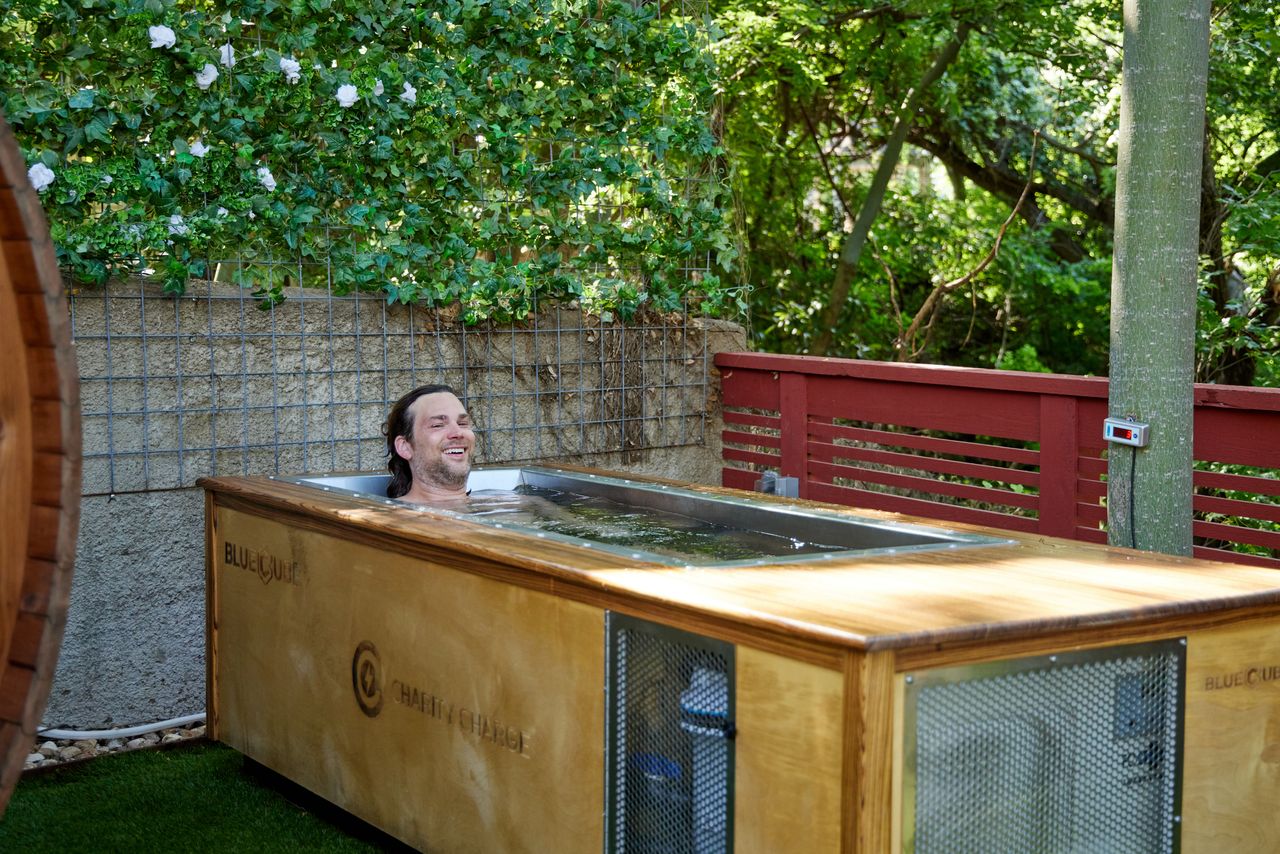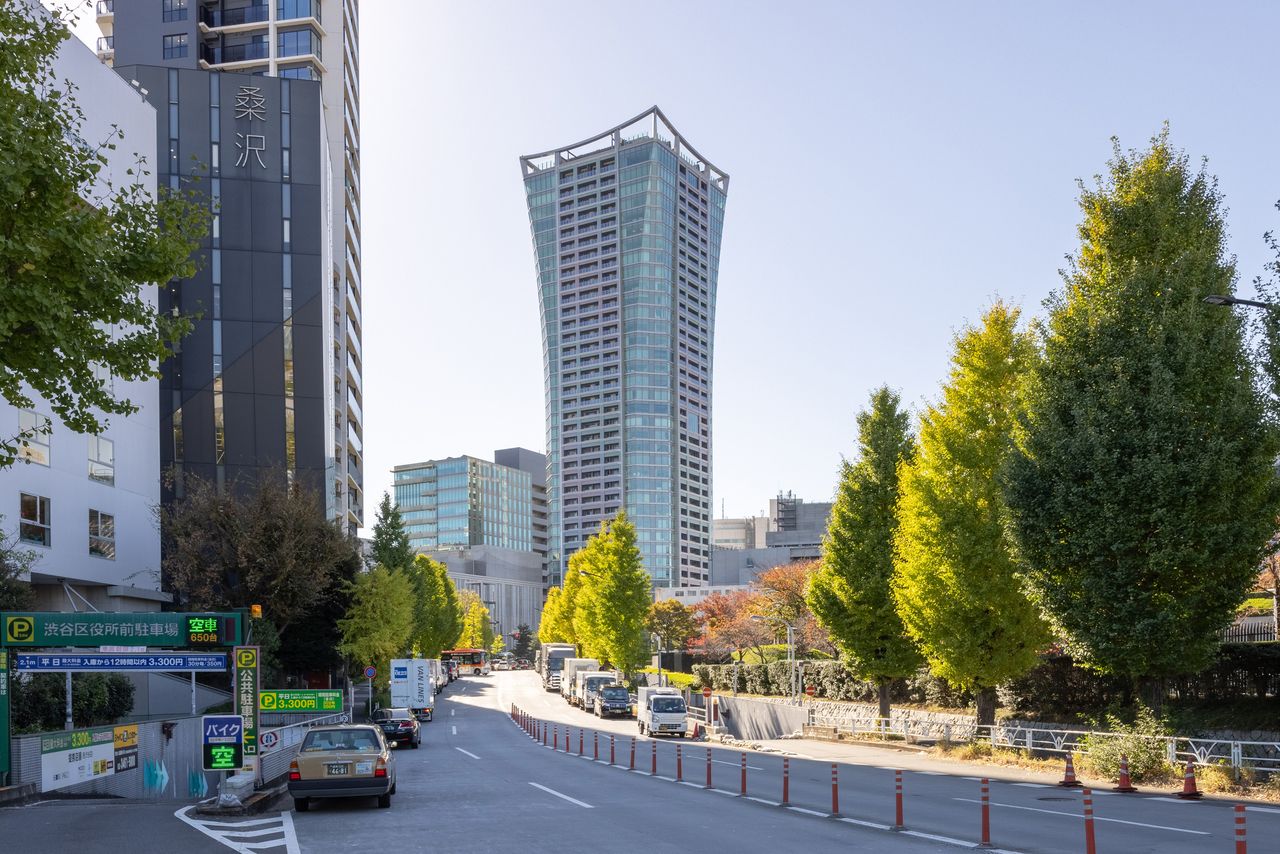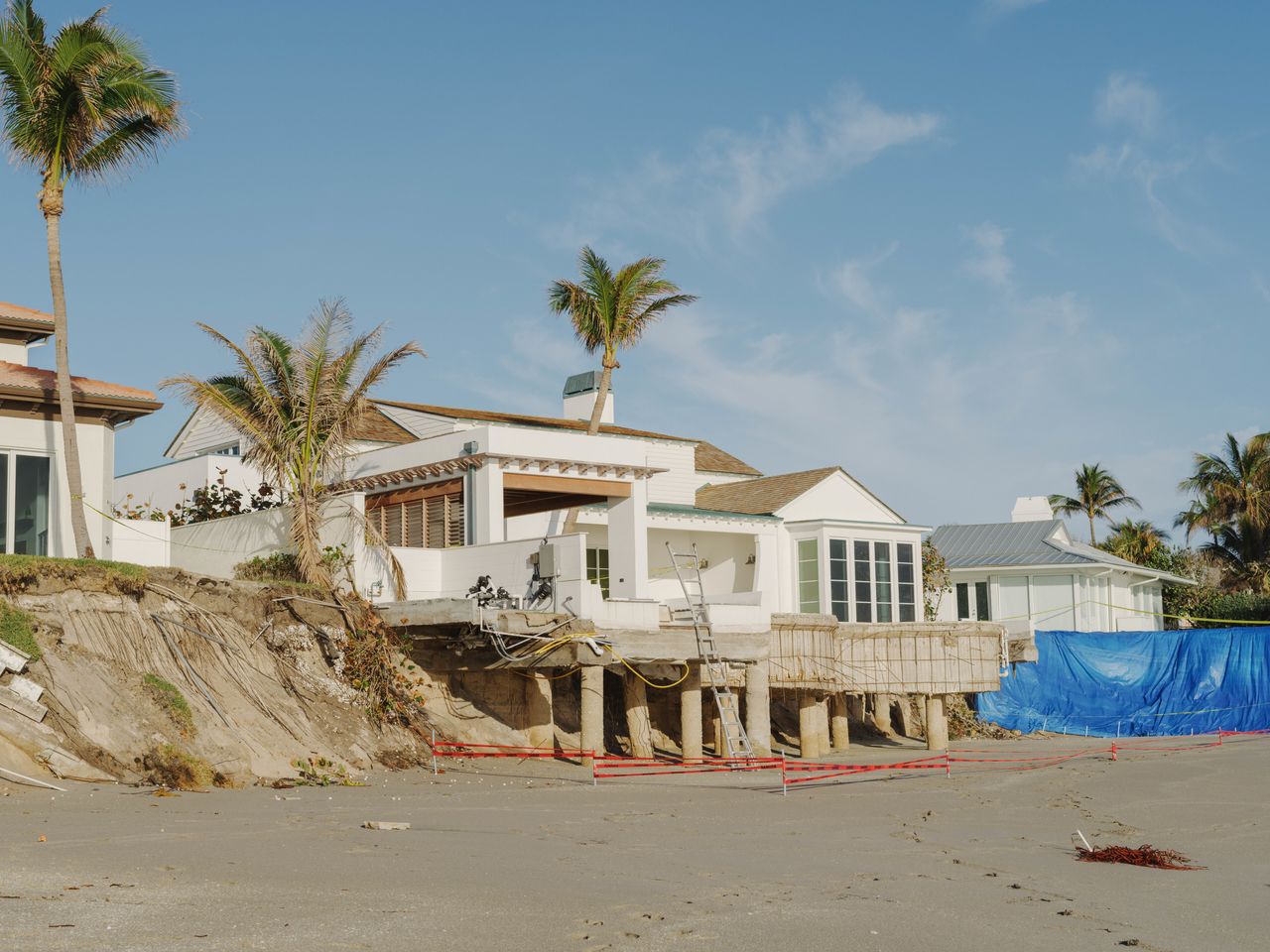The Hottest New Home Amenity? ‘It’s Brutal.’
Homeowners are spending tens of thousands of dollars to outfit their properties with cold plunges
Most mornings after Stephen Garten wakes up at his home in Austin, Texas, he goes into his backyard and starts pacing, preparing himself for what’s next. “It’s brutal,” says Garten, 37, the founder and CEO of social impact company Charity Charge. “It’s a real challenge every day.”
He’s talking about lowering himself into a 66-inch-long and 24-inch-wide stainless steel tub clad in customised zebrawood and submerging himself up to his neck in water that he sets at 39 degrees Fahrenheit, with water circulating at 1,400 gallons a minute. “It’s like being in a river,” he says of the flow rate produced by this particular vessel, a Blue Cube cold plunge.
It’s an experience that Garten typically tolerates for less than two minutes at a time, once or twice a day. And it comes at a price of $19,000. Blue Cube, based in Redmond, Ore., makes cold plunge units that cost between around $18,000 and $29,000.
“Cold plunging has made a profound difference in my life,” Garten says. He says it has brought him health benefits including stress management.
Previously the domain of athletes, bathing in cold water or ice has become a mainstream wellness trend across the U.S. The practice goes by many terms, like cold plunging, ice bathing and cold-immersion therapy. Water temperature below 59 degrees Fahrenheit is generally considered cold immersion. People who swear by it say they have experienced wide-ranging health benefits, like reduced anxiety, alleviated joint and muscle pain and boosted energy and focus.
But while many people are experimenting with do-it-yourself methods—like taking cold showers or filling kiddie pools, horse troughs and unplugged chest freezers with cold water or ice—some enthusiasts have levelled-up their at-home cold plunging setups with sophisticated receptacles priced at tens of thousands of dollars and up.
Developers, meanwhile, are adding cold plunges to amenity-rich luxury complexes like 53 West 53 in New York and Cipriani Residences Miami, betting that cold immersion is here to stay.
“Ice bathing seems like a trend, but people have been doing this for thousands of years,” says Jonathan Coon, co-founder of Austin Capital Partners, which is the developer of Four Seasons Private Residences Lake Austin, 20 minutes from downtown Austin, slated to open in 2026.



In addition to 188 residential units starting at $4.1 million, the Lake Austin property on 145 acres will have 76,000 square feet of indoor wellness and sports facilities, including a 12,000-square-foot orangery, 82-foot swimming pool, sauna, steam room and, of course, cold and hot thermal baths.
Amenities covering 100,000 square feet is a key reason that Onyx W.D. Johnson and Cristian Santangelo bought a $2.2 million two-bedroom, 1,123-square-foot apartment in New York’s One Manhattan Square, an 80-story building located on the Lower East Side. Facilities include a spa with a tranquility garden, 75-foot saltwater swimming pool, hot tub, sauna, steam room and hammam with a cold plunge set between 55 and 58 degrees Fahrenheit. The couple moved into the apartment in May 2021.
Johnson and Santangelo quivered at the idea of cold plunging until they started seeing other people dipping and discussing the health benefits. “We decided to give it a try,” Johnson says.
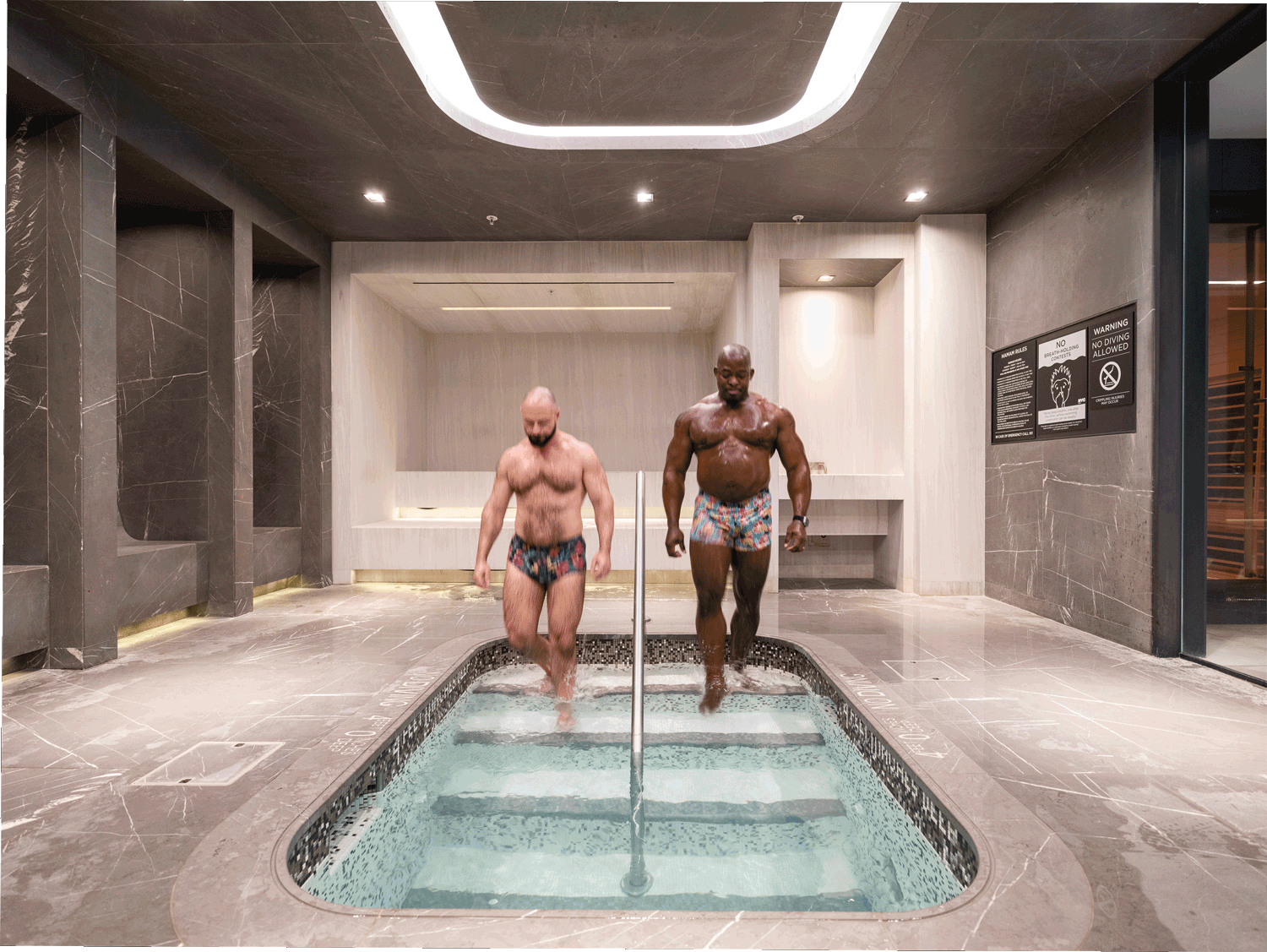
Now cold plunging is part of their wellness regimen. Johnson, 50, who runs a management consulting firm, uses the hot pool, steam room and sauna, and then cold plunges for 45 seconds to a minute. He says this routine speeds up his training recovery time, helps him think clearer and improves his alertness and mood. Santangelo, 45, who is a management consultant, says the ritual helps him calm down and fight anxiety and stress.
Diamond Spas & Pools, based in Frederick, Colo., is a custom manufacturer of luxury pools, spas and soaking tubs for homeowners globally. The company added cold plunges to its portfolio in 2015 and saw one or two orders annually until 2019, when it experienced a sales surge. “Our cold plunge projects have increased 10 times since then,” says Mitch Martinek, the company’s design manager.
Martinek attributes the uptick to several factors. Today’s homeowners want gym and spa amenities at home and on-demand, cold therapy health benefits are better known now, and there are lingering pandemic concerns over public wellness facilities.
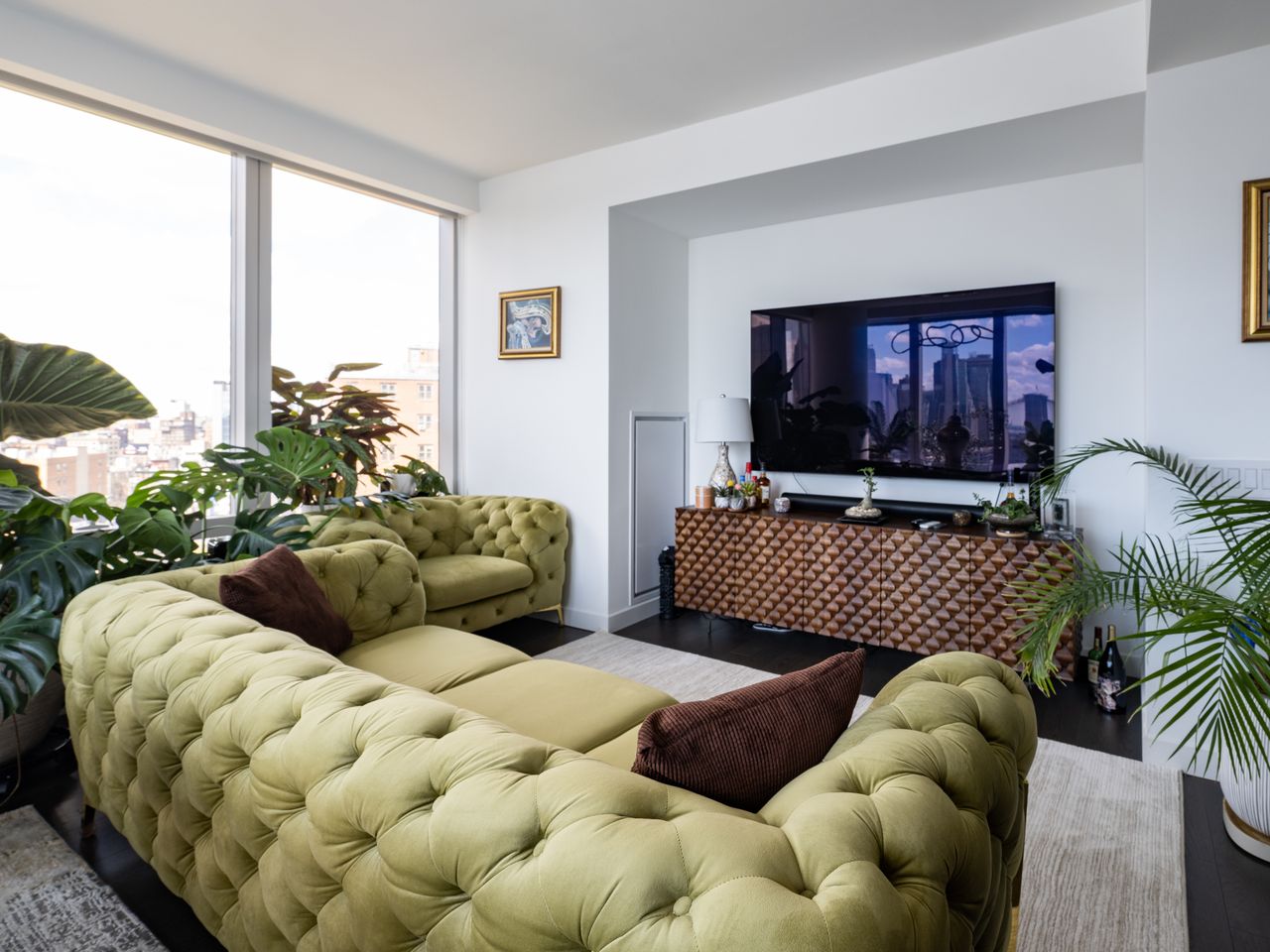
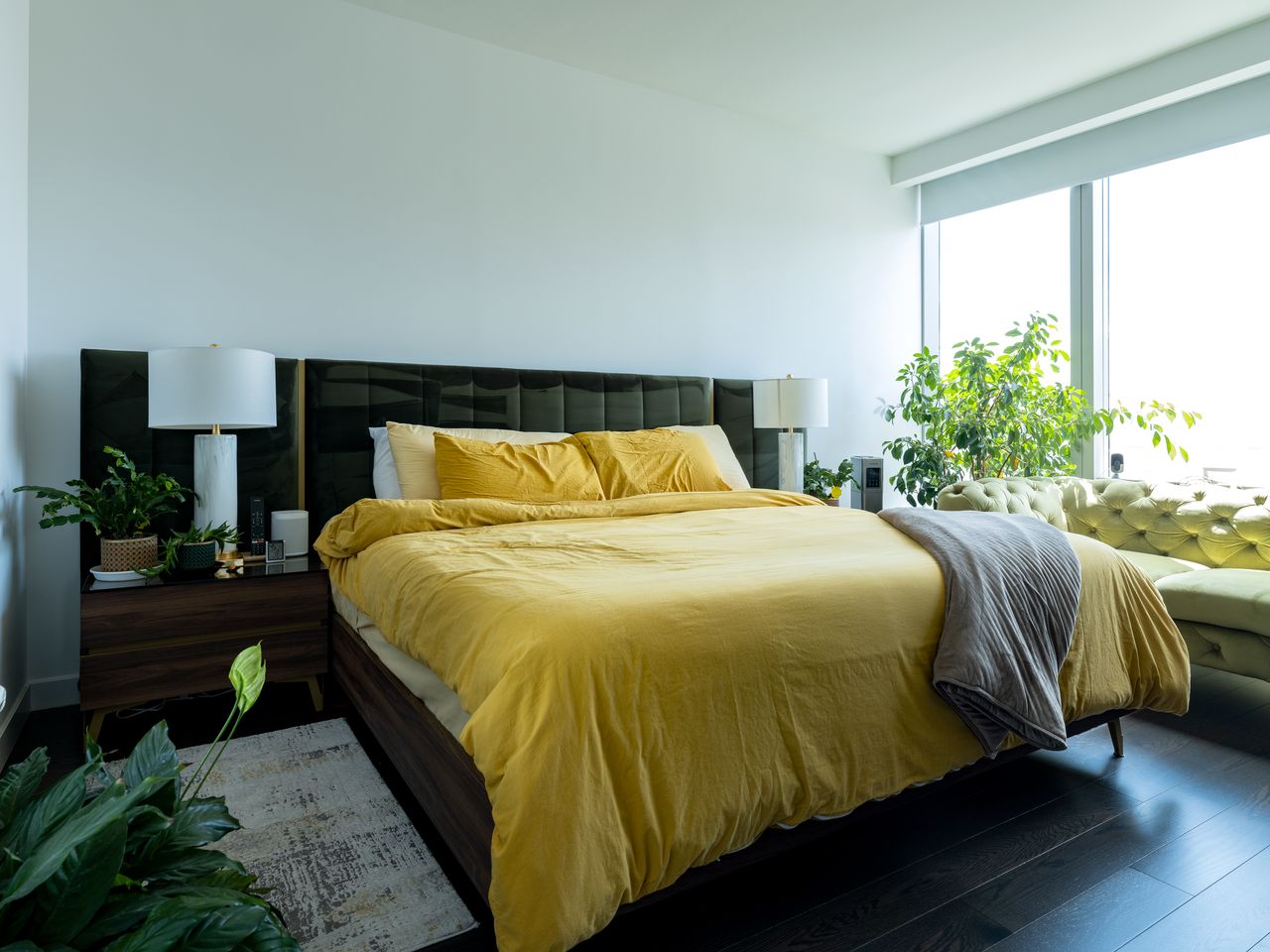
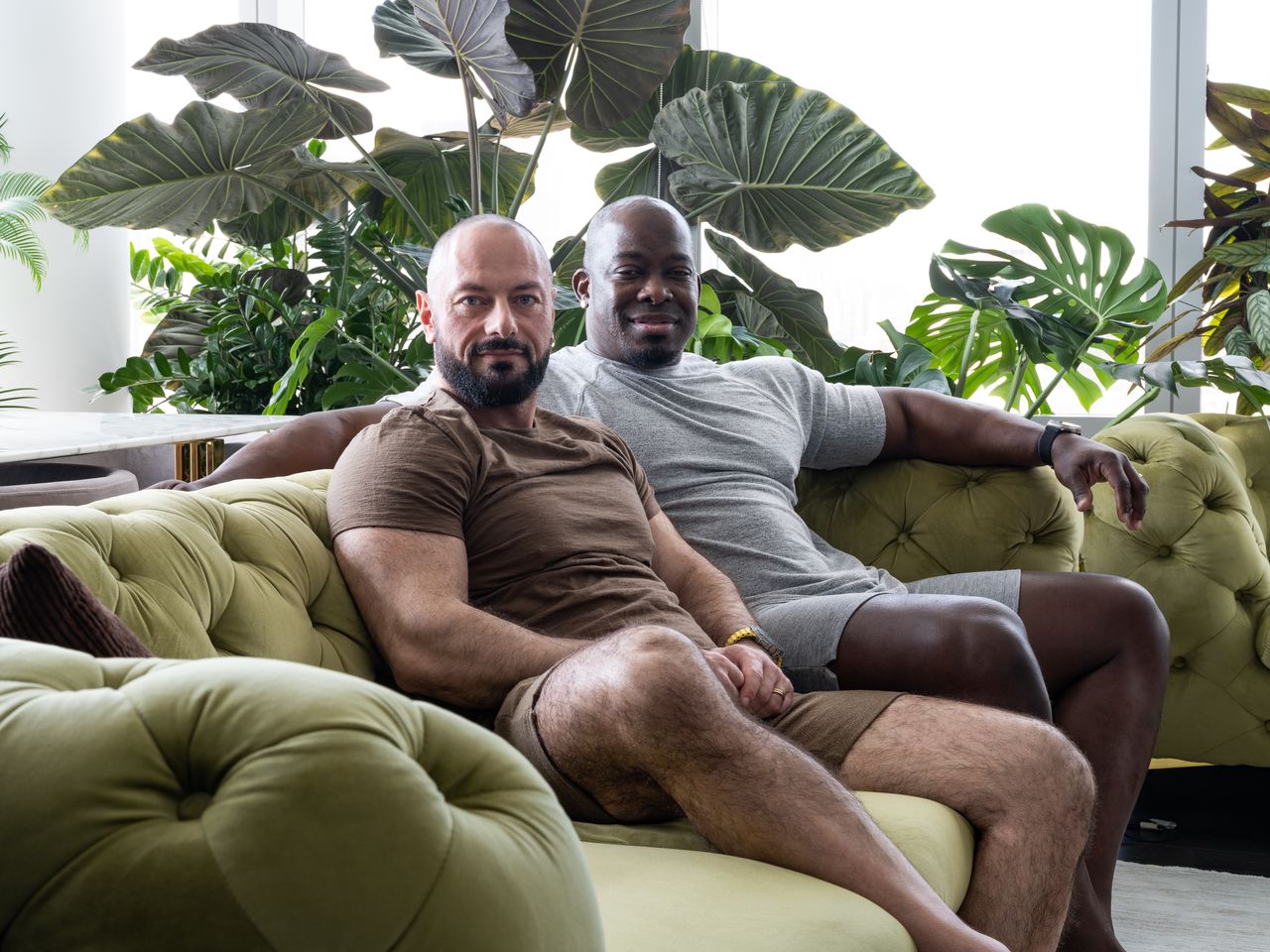
The company’s cold plunges, which chill water to between 40 and 55 degrees Fahrenheit, are made from stainless steel or copper and can be camouflaged in tile, stone or wood. The pools can go indoors or outdoors, come in any size and can work with home automation systems. The average cold plunge costs about $45,000, with elaborate projects running closer to about $65,000.
One of the company’s more unique cold plunges had an acrylic bottom and was in a high-rise building. “It was on a deck with a fire pit below,” Martinek says. “The homeowner wanted to be able to look up through the cold plunge.”
John Thorbahn bought a four-bedroom, 5,500-square-foot single-family home in Hingham, Mass., south of Boston, in March 2020 for $1.6 million. He owns a cold plunge from Phoenix-based company Morozko Forge, founded in 2018. Morozko Forge’s entry-level unit costs $12,850; its upgraded version costs $19,900.
Morozko Forge’s ice baths make ice. While the stainless steel tub is filled with cold water, an ice slab starts building at the tank’s bottom. At about 1-inch thick, the ice detaches and floats to the water’s surface. The ice can be broken up with an implement like a rubber mallet if needed.
Thorbahn, 63, who is the managing director at consulting company NFP, ice bathes most days for two to three minutes at 33 to 34 degrees Fahrenheit. His wife, Jana Thorbahn, 59, ice bathes, too. “The older you get, the more you want to live longer,” says Thorbahn, whose home also has a gym, sauna, red light therapy room and hot tub. “You start investing in protocols to help you be healthy.”
While many cold plungers have developed their own ice bathing rituals, choosing everything from their preferred water temperatures to time limits, Dr. Susanna Søberg, a Danish Ph.D. metabolic scientist and founder of the Soeberg Institute, is one of the world’s experts on the health benefits of cold immersion, which she has been studying for nine years.
In 2021, Søberg published research on cold exposure and hot exposure, which is called “contrast therapy” if the cold and hot exposures are performed in succession. Studying Danish winter swimmers, Søberg identified that a short plunge in cold, moving water combined with sauna use shifts the body’s nervous system and creates physiological changes, like boosting metabolism, lowering inflammation and releasing neurotransmitters that improve cognitive performance and mental health. “You are activating your whole body system,” Søberg says.
In a field that hasn’t been widely studied by the medical community, Søberg has developed what she says is the only scientifically backed cold immersion protocol for reducing stress using contrast therapy and breathing: 11 total minutes of cold immersion combined with 57 total minutes of heat, across two to three days a week. The goal of her method is to expose the body to the smallest amount of healthy stress needed to reap health benefits. “Staying in cold water or heat longer may not be beneficial or necessary,” she says.
Søberg says cold immersion carries the rare risk of cold water shock that can cause confusion or fainting, but the risk increases if a person does hyperventilating breathwork before or during cold water immersion. She also says cold plunging might not be good for people with heart disease or high blood pressure. Søberg advocates for cold plunging with others, and practicing slow, nasal breathing in the water.
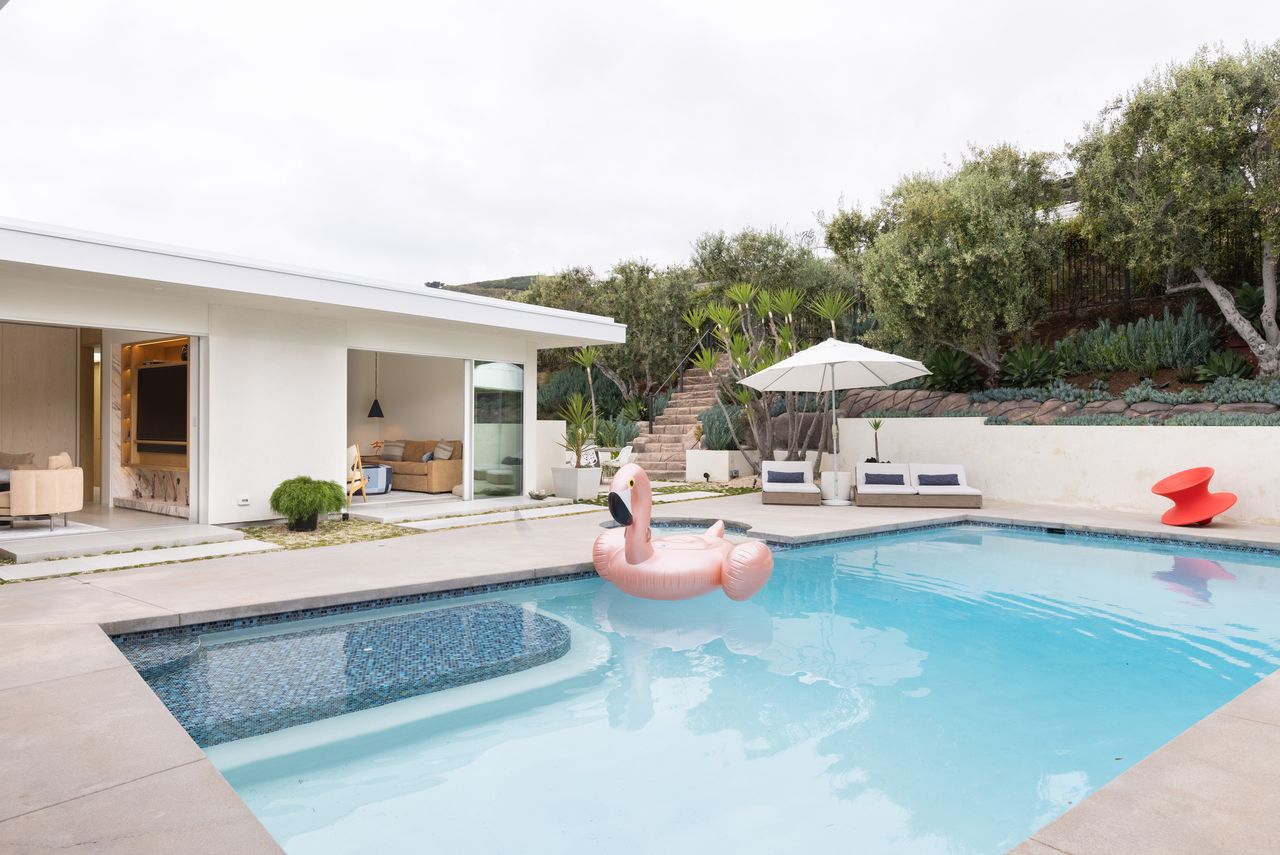
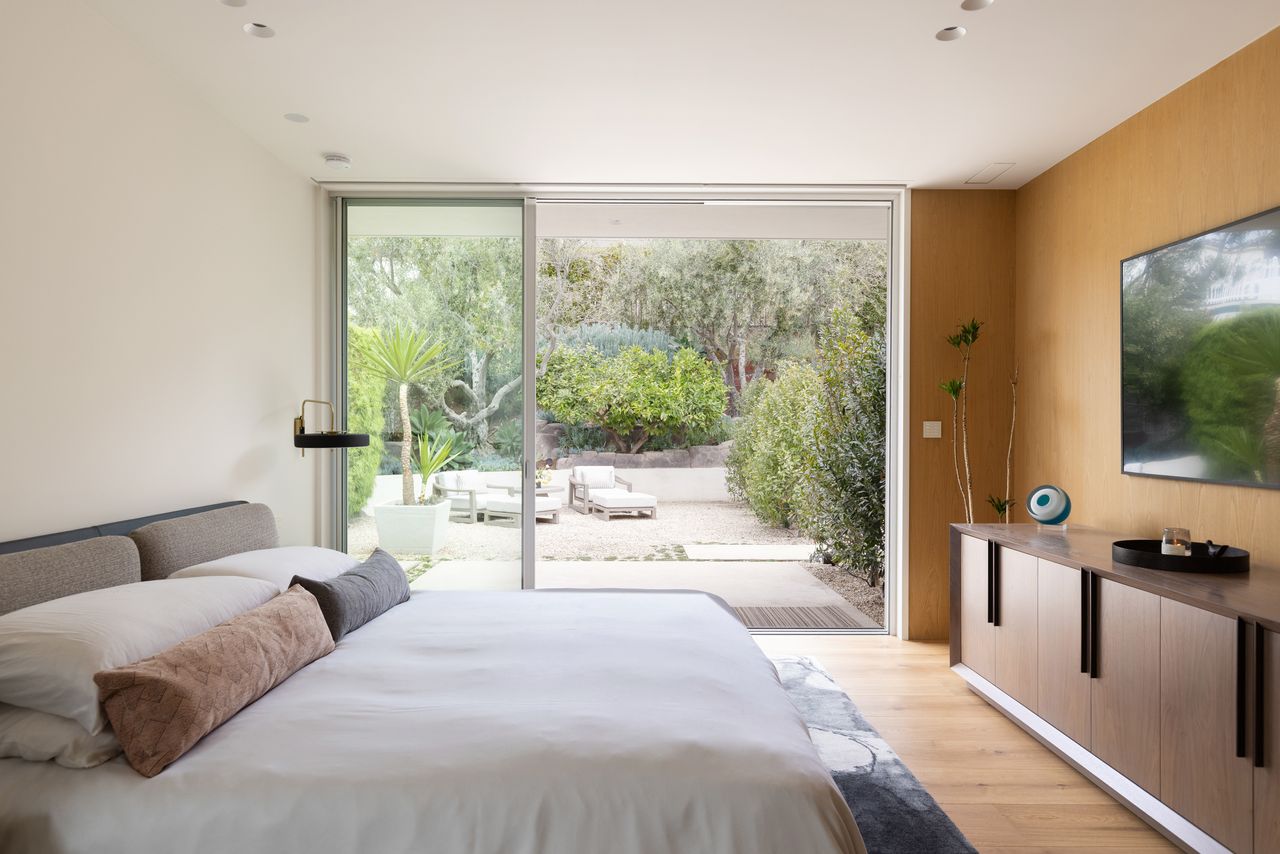
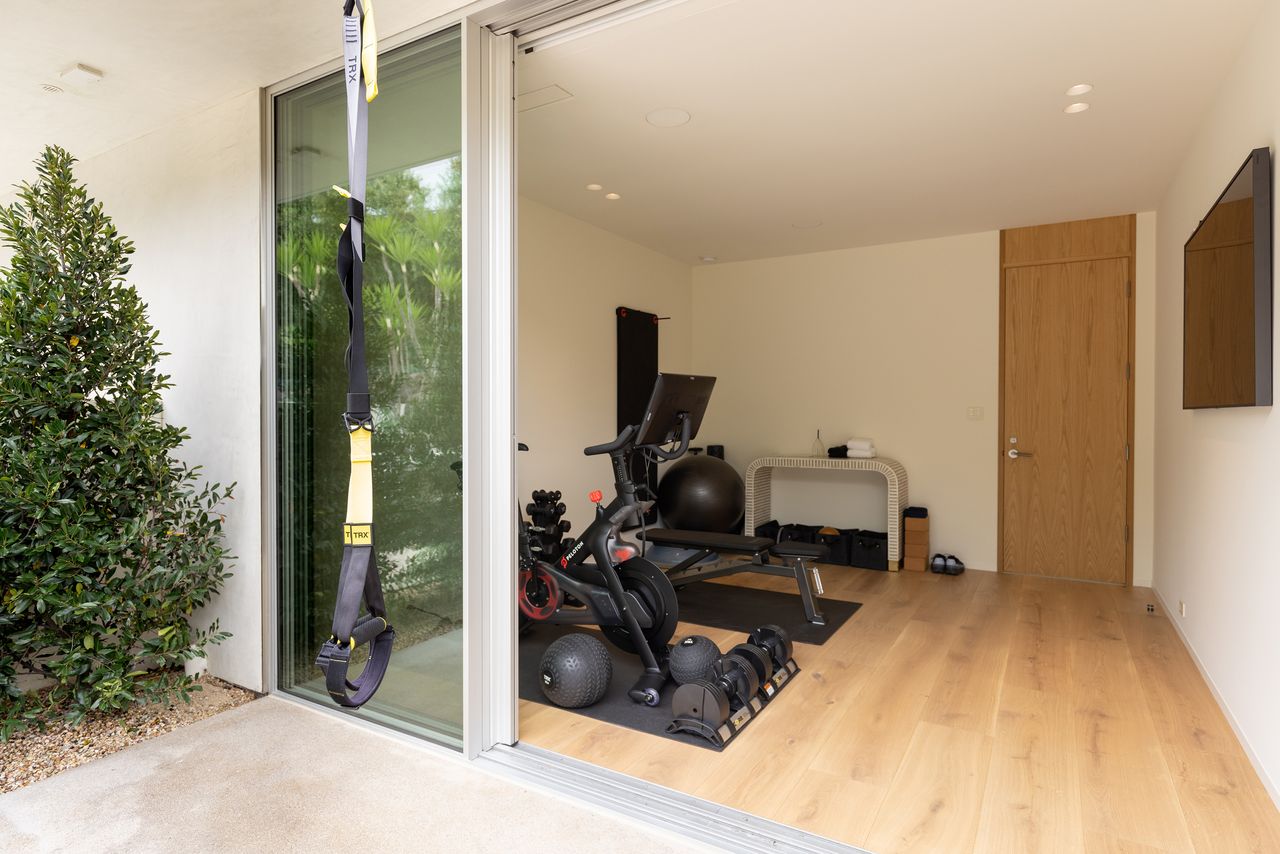
Contrast therapy is why Sausalito, Calif.-based company Yardzen says most of its cold plunge projects involve saunas. Yardzen is an online landscape and home-exterior design company that works with homeowners across the U.S. The company’s co-founder and CEO Allison Messner says wellness yards—encompassing everything from cold plunges to saunas to meditation spaces to forest bathing—is one of Yardzen’s top 2023 trends.
“Peak luxury is having both a cold plunge and a sauna in your yard so you can experience cold and hot therapy,” Messner says.
Tobias Lawry, 51, and his wife, Christine Lawry, 50, live in a three-bedroom 1963 Midcentury Modern house in Dana Point, Calif. They purchased it in October 2018. Between July 2021 and October 2022, they worked with architect Chris Light, designer Frank Berry and builder Crawford Custom Homes to renovate their 3,000-square-foot house to honor its original period intention while modernising it. This included turning a bedroom into a wellness room, which opens into a backyard with a pool, sauna and Blue Cube cold plunge.
The Lawrys, who run an estate-management and concierge services company called LPM, keep their Blue Cube at 47 degrees Fahrenheit. They typically cold plunge in the evening and on weekend mornings.
Stephen Garten in Austin also has a tricked-out wellness yard: In addition to his Blue Cube, he has a barrel sauna from Almost Heaven Saunas, which are manufactured in West Virginia and start around $7,500. He also has a stock tank pool from Cowboy Pools, an Austin-based company that has pool packages starting around $2,000.
He was inspired to create a backyard oasis where he and his fiancée, Katie Snyder, can have friends over. “It’s wellness,” Garten says, “but it’s entertainment too.”
 Copyright 2020, Dow Jones & Company, Inc. All Rights Reserved Worldwide. LEARN MORE
Copyright 2020, Dow Jones & Company, Inc. All Rights Reserved Worldwide. LEARN MORE
This stylish family home combines a classic palette and finishes with a flexible floorplan
Just 55 minutes from Sydney, make this your creative getaway located in the majestic Hawkesbury region.
The marketplace has spoken and, at least for now, it’s showing preference for hybrids and plug-in hybrids (PHEVs) over battery electrics. That makes Toyota’s foot dragging on EVs (and full speed ahead on hybrids) look fairly wise, though the timeline along a bumpy road still gets us to full electrification by 2035.
Italian supercar producer Lamborghini, in business since 1963, is also proceeding, incrementally, toward battery power. In an interview, Federico Foschini , Lamborghini’s chief global marketing and sales officer, talked about the new Urus SE plug-in hybrid the company showed at its lounge in New York on Monday.
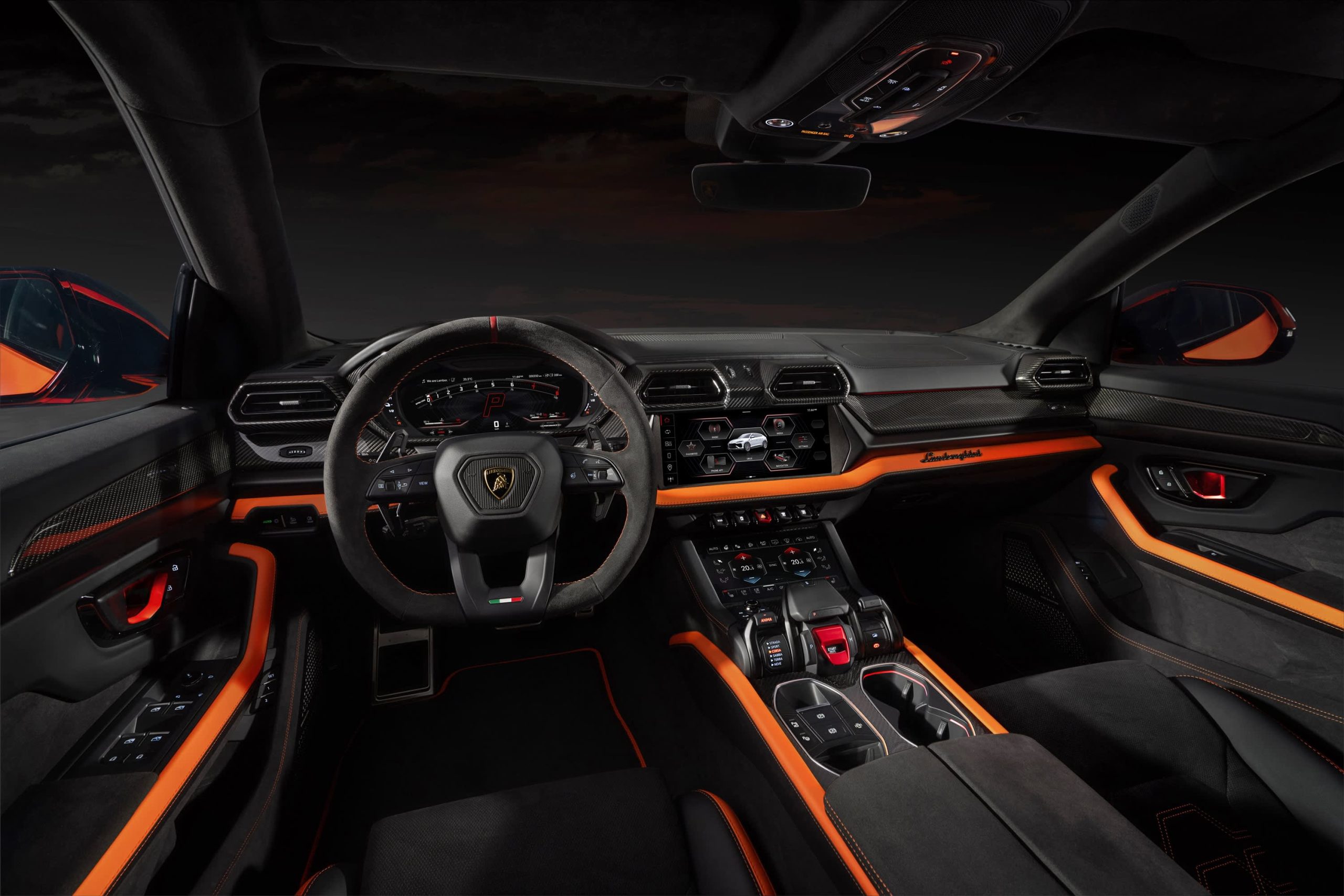
Lamborghini
The Urus SE SUV will sell for US$258,000 in the U.S. (the company’s biggest market) when it goes on sale internationally in the first quarter of 2025, Foschini says.
“We’re using the contribution from the electric motor and battery to not only lower emissions but also to boost performance,” he says. “Next year, all three of our models [the others are the Revuelto, a PHEV from launch, and the continuation of the Huracán] will be available as PHEVs.”
The Euro-spec Urus SE will have a stated 37 miles of electric-only range, thanks to a 192-horsepower electric motor and a 25.9-kilowatt-hour battery, but that distance will probably be less in stricter U.S. federal testing. In electric mode, the SE can reach 81 miles per hour. With the 4-litre 620-horsepower twin-turbo V8 engine engaged, the picture is quite different. With 789 horsepower and 701 pound-feet of torque on tap, the SE—as big as it is—can reach 62 mph in 3.4 seconds and attain 193 mph. It’s marginally faster than the Urus S, but also slightly under the cutting-edge Urus Performante model. Lamborghini says the SE reduces emissions by 80% compared to a standard Urus.
Lamborghini’s Urus plans are a little complicated. The company’s order books are full through 2025, but after that it plans to ditch the S and Performante models and produce only the SE. That’s only for a year, however, because the all-electric Urus should arrive by 2029.
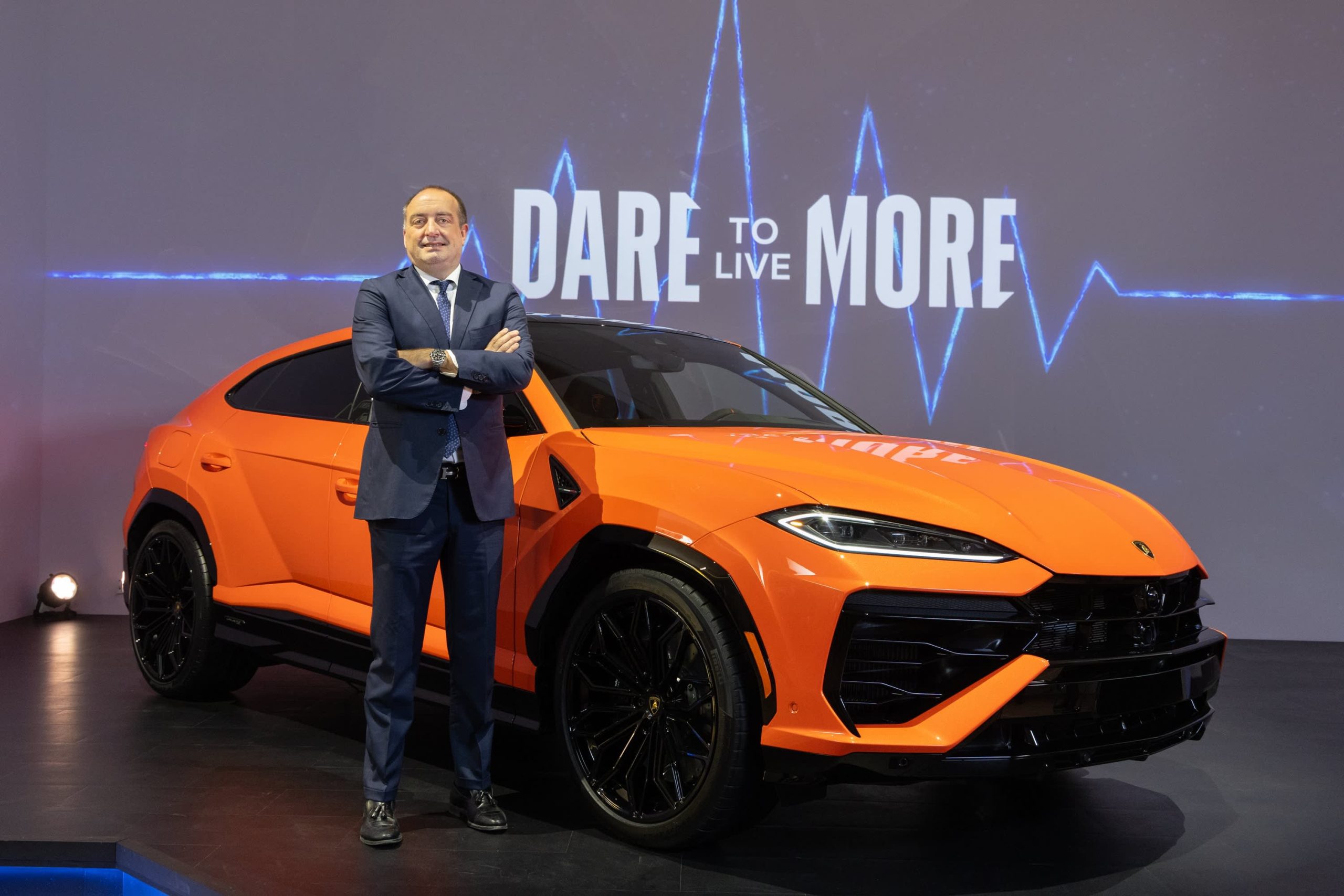
Lamborghini
Thanks to the electric motor, the Urus SE offers all-wheel drive. The motor is situated inside the eight-speed automatic transmission, and it acts as a booster for the V8 but it can also drive the wheels on its own. The electric torque-vectoring system distributes power to the wheels that need it for improved cornering. The Urus SE has six driving modes, with variations that give a total of 11 performance options. There are carbon ceramic brakes front and rear.
To distinguish it, the Urus SE gets a new “floating” hood design and a new grille, headlights with matrix LED technology and a new lighting signature, and a redesigned bumper. There are more than 100 bodywork styling options, and 47 interior color combinations, with four embroidery types. The rear liftgate has also been restyled, with lights that connect the tail light clusters. The rear diffuser was redesigned to give 35% more downforce (compared to the Urus S) and keep the car on the road.
The Urus represents about 60% of U.S. Lamborghini sales, Foschini says, and in the early years 80% of buyers were new to the brand. Now it’s down to 70%because, as Foschini says, some happy Urus owners have upgraded to the Performante model. Lamborghini sold 3,000 cars last year in the U.S., where it has 44 dealers. Global sales were 10,112, the first time the marque went into five figures.
The average Urus buyer is 45 years old, though it’s 10 years younger in China and 10 years older in Japan. Only 10% are women, though that percentage is increasing.
“The customer base is widening, thanks to the broad appeal of the Urus—it’s a very usable car,” Foschini says. “The new buyers are successful in business, appreciate the technology, the performance, the unconventional design, and the fun-to-drive nature of the Urus.”
Maserati has two SUVs in its lineup, the Levante and the smaller Grecale. But Foschini says Lamborghini has no such plans. “A smaller SUV is not consistent with the positioning of our brand,” he says. “It’s not what we need in our portfolio now.”
It’s unclear exactly when Lamborghini will become an all-battery-electric brand. Foschini says that the Italian automaker is working with Volkswagen Group partner Porsche on e-fuel, synthetic and renewably made gasoline that could presumably extend the brand’s internal-combustion identity. But now, e-fuel is very expensive to make as it relies on wind power and captured carbon dioxide.
During Monterey Car Week in 2023, Lamborghini showed the Lanzador , a 2+2 electric concept car with high ground clearance that is headed for production. “This is the right electric vehicle for us,” Foschini says. “And the production version will look better than the concept.” The Lanzador, Lamborghini’s fourth model, should arrive in 2028.
Consumers are going to gravitate toward applications powered by the buzzy new technology, analyst Michael Wolf predicts
Just 55 minutes from Sydney, make this your creative getaway located in the majestic Hawkesbury region.









